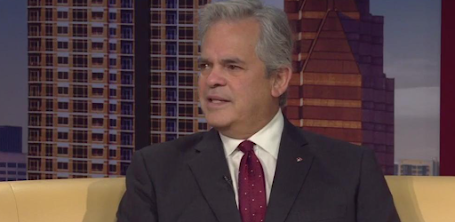In a final ask-the-mayor interview with KTBC-TV Fox 7, outgoing Austin Mayor Steve Adler finally laid down his cards regarding the strategy behind his widely criticized homelessness policies.
Observers have for the last three years scratched their heads over Adler's apparent recklessness -- the sudden removal of a public camping policy in 2019 (which he admitted did not work), a behind-the-scenes order to require Council members to identify a hotel or other building in each Council district to convert into a small shelters for millions of dollars each, and numerous other controversial decisions regarding homelessness and pubic safety in Texas's capital city. This was during a period of economic struggle, an increase in crime, and law enforcement/public safety funding cuts, leading numerous organizations to rally to "save Austin," plus action from the Texas Legislature and Governor.
Now we know why: Adler's agenda was designed to make a political point.
"... The disruption associated with our community seeing the people who were experiencing homelessness was something that had to happen." (Watch at 3:20)
Adler said cities on the West Coast successfully "hid it" [homeless camps and related activity] until the problem became so widespread it was difficult to solve. "We could not follow in that same path," he said.
This is not the first time the term "disruptive" has been used by Adler, who lives in a high-rise apartment in downtown's secured W Hotel. He followed that since the homeless camping ban was lifted, the city had "raised" [taxed or attracted federal and state funding?] half-a-billion dollars, or 90% of the funding required to fulfill Adler's vision of addressing homelessness. City of Austin homelessness czar Dianna Grey said private donors have contributed $50 million.
Critics have pointed out numerous times the expense of Adler's plan versus the inability of small shelters to adequately house the homeless. They have also pointed out the distance from city and nonprofit services from each proposed shelter.
While Adler was making homelessness visible, COVID-19 was spreading. This was the primary reason stated by community activists for ceasing the annual Point In Time homeless count and survey for two years. As of November, the city estimated the unsheltered population of Austin was around 3,000 and the shelter population just under 1,000 -- although an informal census of Austin's homeless had not been conducted since 2020. Other activists have estimated that figure may be closer to 8,000 while some consultants have put that number as high as 10,000, at least during the time of the camp-everywhere regime.
UPDATE (1/23/23): The Point In Time count will resume this Friday, which will provide a population estimate for how many homeless people there are in Austin -- and just how many have moved to the Austin area since the last count. You can volunteer here.

No comments:
Post a Comment
We strongly support the First Amendment. But we ask that you keep it friendly and PG.